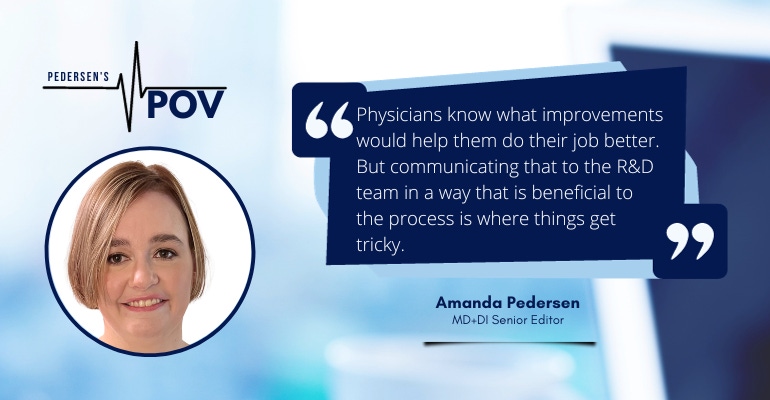Don't Just Give Them a Faster Horse
This week in Pedersen's POV, our senior editor shares some R&D wisdom inspired by a recent conversation with a Medtronic engineer.
October 23, 2023

There's a famous quote in the engineering world that is often mis-attributed to Henry Ford: "If I had asked people what they wanted, they would have said faster horses."
There's no direct evidence that Ford ever actually said those famous words, but the sentiment of the quote does align with his approach to product development. The Model T was the result of thinking beyond what people might have been able to imagine or articulate at the time, rather than simply catering to existing desires or demands.
I was reminded of this view on research and development last week during a conversation with Dermot O’Brien, an R&D engineering manager at Medtronic. O'Brien was describing the R&D process behind Medtronic's fifth generation transcatheter aortic valve implantation (TAVI) system, the Evolut FX. Specifically, he talked about how the team developed a more flexible delivery system that allows for 360-degree freedom of motion, with a stable, predictable deployment.
As with any good design project, Medtronic began with the voice of customer approach. The team worked with clinician partners in multiple geographies to understand what areas of the previous generation device, the Evolut Pro+, would benefit from further development.
As the end-user of the device, physicians know what improvements would help them do their job better. But communicating those needs to the R&D team in a way that is beneficial to the process is where things get tricky.
For example, during the voice of customer feedback for the Evolut FX project, physicians suggested that the delivery catheter should have steering capabilities. But that's not particularly helpful to the R&D team because they're looking for problems, not potential solutions.
Medtronic could have just made the delivery catheter steerable as suggested. And indeed, the R&D team did explore that idea early on. But in asking for steering capabilities, the physician was really trying to communicate a need for a more flexible delivery system. This drove home the importance of translating customer voices into customer needs, and doing so as early on in the process as possible.
"If you don't start from the right place you're not going to end up in the right place," O'Brien said. "So, we put an effort into that early phase about making sure we're understanding the problem correctly and not just following a trend or a particular type of technology because that was the feedback that came through."
After my conversation with O’Brien last week, I had a much better understanding of what it means to distill customer feedback into actual user needs.
The Evolut FX example also makes it easier to imagine how the voice of customer approach might have played out in Henry Ford’s day. Indeed, Ford's customers would have found it easier to say, "I need a faster horse," than to imagine the possibility of a mass-produced automobile like the Model T.
Ford was able to innovate beyond incremental improvements. But he recognized that to bring such an innovation to the market, he would have to find a way to mass produce automobiles so that they were more affordable and accessible to a broader range of people. So, he introduced the concept of the moving assembly line to increase production efficiency and lower the cost.
That's not to say he invented assembly lines – those already existed – but he is credited with adapting the process for the automobile industry. As a result, he was able to manufacture and sell the Model T at a significantly lower price than his competition.
While the faster horse quote isn't verifiable, it is a reminder of why R&D teams must be able to distill customer voices into unarticulated user needs. And that’s how Medtronic ended up building a more flexible delivery catheter for the Evolut FX system.
About the Author(s)
You May Also Like



.png?width=300&auto=webp&quality=80&disable=upscale)
